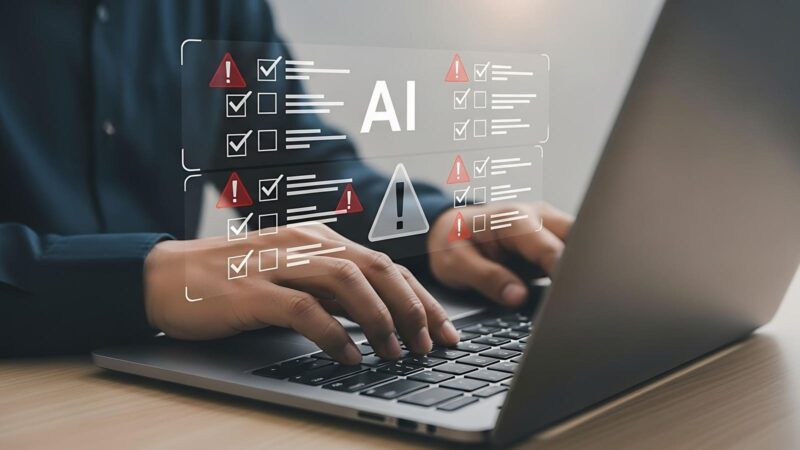With $5.5 trillion at stake globally due to workforce skills gaps, businesses in 202 6are making five critical mistakes that threaten their survival in the AI era.
Adobe Stock
The skills businesses will need in 2026 to compete and succeed are not the same as those they relied on just a few years back.
AI and automation are driving new ways of working, threatening to make humans obsolete in some roles but also creating entirely new ones.
In this new world, upskilling, reskilling and continuous education aren’t tasks for HR to tick off; they’re business priorities. With one IDC report predicting that $5.5 trillion will be lost to the world economy due to the mismatch between workforce skills and industry needs, it’s clear many are being held back from addressing them.
Whether it’s outdated technology, cultural disconnects or a lack of attention at the top level, there are a number of common mistakes I frequently see taking place here.
So here’s an overview of five things to avoid if you don’t want your business to become a casualty of the skills crisis.
1. Overlooking AI Literacy
There aren’t many jobs that can’t be affected, augmented, or, inevitably, replaced by AI. This means that it’s essential that everyone understands how AI impacts their role and responsibilities.
Establishing a baseline level of AI literacy where the workforce is aware of the opportunities—as well as the risks—to them personally and the business as a whole is critical.
According to one survey, two-thirds of businesses have had work delayed by up to ten months because business teams weren’t able to effectively collaborate with AI and data experts. And the risks aren’t limited to missed opportunities. Many companies, including Samsung, have incurred reputational damage and loss of trust due to employees not being sufficiently educated on risky AI practices.
AI is changing the world rapidly, and ensuring there’s a baseline of knowledge and good practice around using it effectively and safely should be a priority for all businesses. This could involve setting up AI boot camps, implementing acceptable use policies and establishing sandboxes where workers can experiment.
2. Failing To Deliver The “Always On” Learning Ecosystem
Experts estimate that a learned technical skill today has a half-life of as little as 2.5 years before it’s time for the skilled person to update or refresh their skills or risk falling behind in their productivity.
Today, organizations wanting to attract and keep the world-class human talent driving the AI revolution have to make learning available on tap. This means weaving opportunities to upskill or reskill into every career path with an eye firmly on the skills that will be essential tomorrow. It could involve building partnerships with education providers or leveraging emerging technologies like augmented reality to create innovative on-the-job training programs.
3. Neglecting Soft Skills
In a world where many repetitive technical tasks are carried out by machines, humans with the abilities they can’t replicate—creative thinking, curiosity, leadership and empathy—increase in value exponentially.
These are among the skills that the World Economic Forum’s Future Of Jobs 2025 predicts will be the most important over the next five years. AI algorithms still struggle to leverage emotional intelligence into problem-solving and decision-making in a way that solves real business problems. So, unless your culture of workplace skills and training values communication abilities, collaborative teamworking, inspiring leadership and tactful conflict resolution, you could be sleepwalking into this one.
4. Leaving Managers Out Of The Loop
Today, managers are expected to oversee and sign off on training and upskilling programs, but are too often overlooked themselves. Often, they aren’t formally trained as teachers, coaches, or even mentors, but when they’re not properly prepared to help teams navigate these fast-changing times, efforts to keep everyone’s skills up-to-date will quickly fail.
Building training targets into management KPIs and implementing reporting of progress towards closing skills gaps is one way to address this. But this has to be backed with the provision of training to managers themselves, with a focus on developing the skills needed to lead workplace upskilling.
Managers need the ability to deliver feedback and spot opportunities for learning and skill progression in their teams. Equipping them with the tools and competencies should be a priority for all businesses.
5. Sacrificing Skills And Training In An Economic Downturn
Between wars, inflation and tariffs, the global economy is going through pretty turbulent times right now. Many businesses are looking to reduce exposure to risk and rein in costs, in anticipation of hardships ahead. But cutting training and upskilling initiatives almost certainly isn’t the right move. As well as letting opportunities to innovate slip away, this runs the risk of leaving workforces unprepared for dealing with the challenges of an economic downturn, which may involve rapid pivots and adoption of more flexible and agile working processes. The reality is that economic downturns are the time when education and upskilling matter most, as professionals are forced to adapt quickly to changing circumstances. Rather than slashing learning and development spending, organizations should learn to more efficiently identify areas where they will create the most benefit and contribute towards business goals.
Mitigating Workplace Skills And Upskilling Risks
Understanding the importance of avoiding these business pitfalls can help companies navigate the tech skills crisis we are facing in 2026. As the ability to innovate through technology increasingly becomes a differentiator between business success and failure, adopting a strategic approach towards upskilling, reskilling and continuous learning becomes critical for any company that doesn’t want to get left behind.









